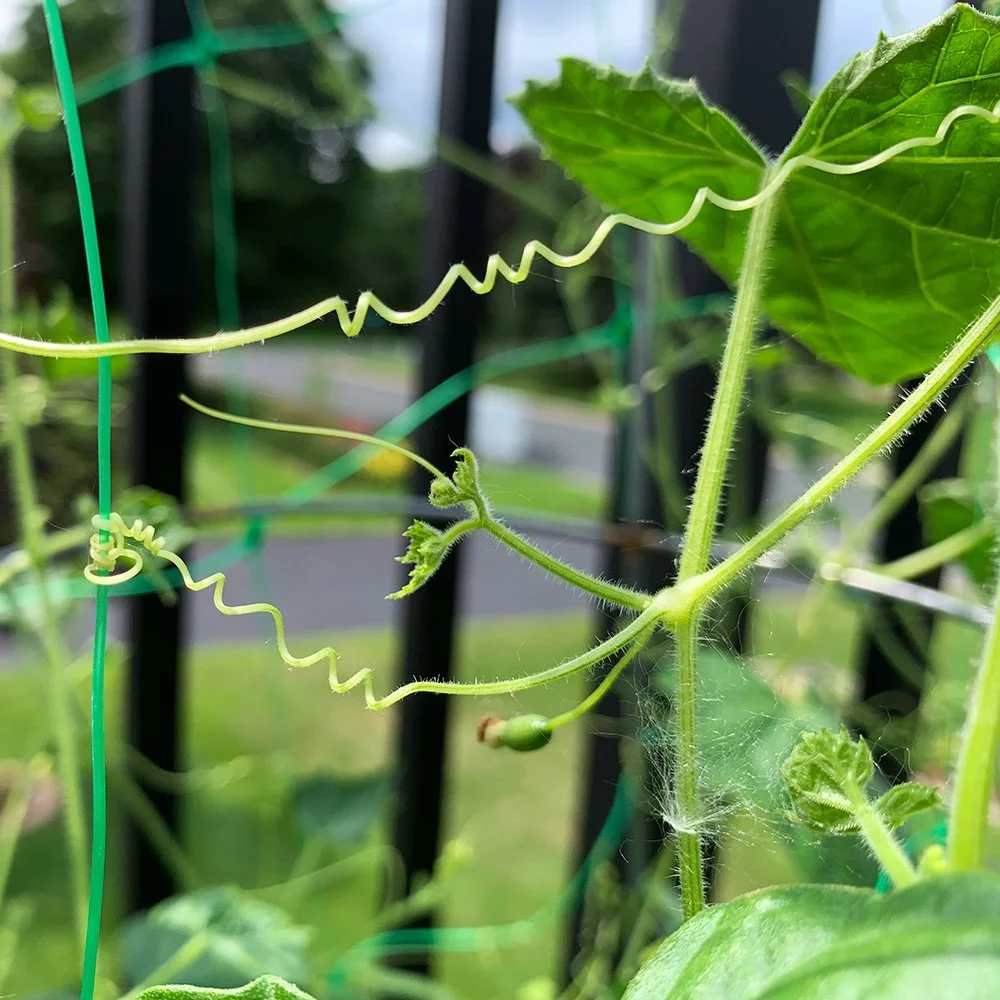Darwin’s Climbers
While pursuing The Theory of Evolution, Charles Darwin grew (and yes that is a pun) intensely curious about climbing plants. In 1862, Darwin was gifted two packets of cucumber seeds from an American botanist and was “so much fascinated and perplexed by the revolving movements of the tendrils and stems . . . that [he] procured various other kinds of Climbing Plants, and studied the whole subject.”
Darwin was so tangled up in the topic, that he ended up publishing a book on “The Movements and Habits of Climbing Plants” in 1875. His relentless tracking of vines and tendrils led him to propose that plants climbed by five main mechanisms: twining, leaf-climbing, tendrils, hooks and roots. Of these methods, the two most common are twining and tendrils.
Twining involves what Darwin called an exaggerated “circumnutation,” a graceful rotation of a vine in a large arc. Once a vine comes into contact with an appropriate support it coils upward and tightens into a snug, usually-right-handed helix. If the vine should grow beyond its support, the exploratory corkscrewing will begin again.
Tendrils are specialized plant organs. Much like twining plants, they extend, arc and climb, but their movements are faster and more erratic. An individual plant can have both left- and right-twirling tendrils, and they don’t necessarily need contact to start coiling into tight springs. Tendrils also have hollow tubes called gelatinous fibers that give the organs their peculiar tensile strength and ability to squeeze.
All these plant motions may seem animal-like, akin to a searching octopus tentacle, but in reality they are actually tightly regulated processes of cellular growth and elongation. By modifying how quickly cells multiply and how compressed or stretched out they are on different sides of a vine/tendril, the plant can create curvature and coil. Many of these changes occur only after cells contact a surface through a mechanism known as thigmotropism, growth in response to touch.
Fascinatingly, evidence suggests that climbing plants may also be able to detect the presence of a support structure and its diameter without touch. Pea plant tendrils were not only able to grow towards a 3D support, but they were able to modify their structures to better accommodate a thin or thick support before ever coming into contact. The evidence suggests that plants have anticipatory behaviors and are able to map their environments in ways we do not fully understand.
Brian Rutter, PhD, is the cofounder of Hundredfold Video and plant biologist working for 2Blades at the University of Minnesota. Subscribe to our newsletter to receive our “Sower Stories – Odd Facts About Plants” and video production tips in your inbox every month!
Works Cited:
Bowling, Andrew J., and Kevin C. Vaughn. "Gelatinous fibers are widespread in coiling tendrils and twining vines." American journal of botany 96, no. 4 (2009): 719-727.
Darwin, Charles. The movements and habits of climbing plants. John Murray, 1875.
Isnard, Sandrine, and Wendy K. Silk. "Moving with climbing plants from Charles Darwin's time into the 21st century." American Journal of Botany 96, no. 7 (2009): 1205-1221.
Guerra, Silvia, Alessandro Peressotti, Francesca Peressotti, Maria Bulgheroni, Walter Baccinelli, Enrico D’Amico, Alejandra Gómez, Stefano Massaccesi, Francesco Ceccarini, and Umberto Castiello. "Flexible control of movement in plants." Scientific Reports 9, no. 1 (2019): 16570.

